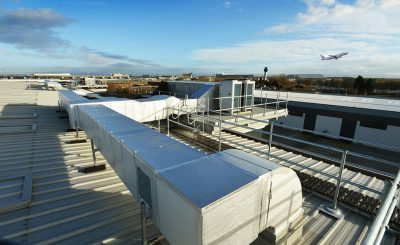In the realm of finance, the ability to accurately predict future financial conditions and trends is invaluable. Financial forecasting tools have long been utilized by businesses and individuals to navigate the uncertainties of economic environments. However, the advent of open banking has significantly enhanced the capabilities of these tools, providing more accurate, real-time insights into financial health and future trends. This blog post explores the advancements in financial forecasting tools enabled by open banking, illustrating how they offer users unprecedented precision in financial planning.
The integration of open banking with financial forecasting
Real-time financial data access: open banking revolutionizes financial forecasting by providing tools with access to real-time financial data. This immediate access allows for the continuous updating of financial models, ensuring that forecasts reflect the most current information. A report by mckinsey highlighted that real-time data could reduce forecasting errors by up to 50%.
Comprehensive financial picture: open banking enables the aggregation of financial data from multiple sources, offering a holistic view of an individual’s or business’s financial situation. This comprehensive data input significantly enhances the accuracy of financial forecasts, allowing for more nuanced and informed financial planning and decision-making.
Enhancements in financial forecasting tools
Predictive analytics for personal finance: for individuals, financial forecasting tools powered by open banking utilize predictive analytics to offer personalized financial advice. These tools can forecast future cash flows, savings levels, and spending patterns, enabling users to optimize their financial decisions. For example, tools can predict when a user may face a cash shortfall and suggest preemptive measures to avoid it.
Dynamic business forecasting: businesses benefit from advanced forecasting tools that can analyze real-time financial data alongside broader economic indicators to predict future financial conditions. These tools can adjust forecasts based on changing market conditions, providing businesses with dynamic insights that support strategic planning and risk management.
Innovations in forecasting methodologies
Ai and machine learning algorithms: the integration of ai and machine learning algorithms with open banking data has led to significant advancements in forecasting methodologies. These algorithms can identify patterns and correlations within large datasets that may not be apparent to human analysts, improving the accuracy of financial forecasts.
Scenario analysis and stress testing: modern financial forecasting tools offer sophisticated scenario analysis and stress testing capabilities, allowing users to explore various “What-if” scenarios. By simulating different economic conditions, interest rates, and market trends, users can better understand potential risks and opportunities.
The future of financial forecasting
Customized and adaptive forecasting: the future of financial forecasting lies in the development of customized and adaptive forecasting models that can adjust to individual or business-specific circumstances. These models will leverage ongoing advancements in data analytics and ai, offering forecasts that are not only accurate but also highly personalized.
Integration with financial planning platforms: financial forecasting tools are increasingly being integrated with broader financial planning and management platforms. This integration provides users with a seamless experience, where forecasting insights directly inform financial planning decisions, budgeting, and investment strategies.
Overcoming challenges
Ensuring data privacy and security: the reliance on open banking data necessitates stringent data privacy and security measures. Forecasting tools must ensure the secure handling of financial data, maintaining user trust and complying with regulatory requirements.
Educating users: as financial forecasting tools become more sophisticated, educating users on interpreting and utilizing these insights effectively is crucial. This includes understanding the assumptions behind forecasts and the potential variability in predictions.
Conclusion
The evolution of financial forecasting tools, propelled by the integration of open banking, marks a significant leap forward in financial planning and analysis. By harnessing real-time, comprehensive financial data, these tools offer individuals and businesses more accurate insights, supporting informed decision-making and strategic planning. As technology continues to advance, the potential for further innovations in financial forecasting is vast, promising even more precise and personalized financial guidance in the years to come.








